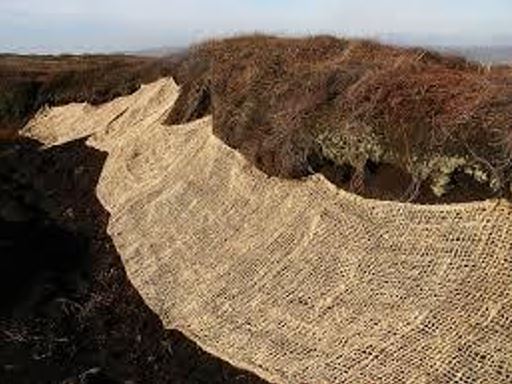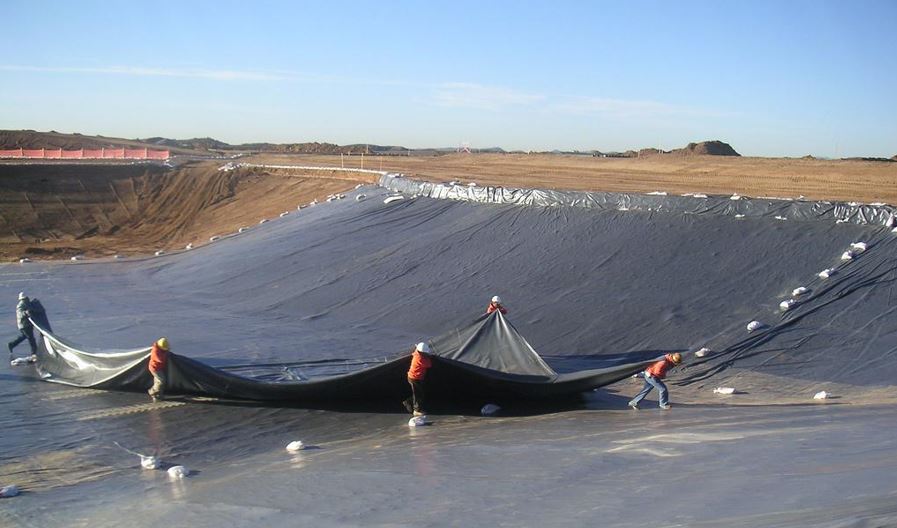Two issues which have been creating challenges for civil engineers are the rising costs of materials and diminishing sources of aggregate and other components used in the construction of infrastructure. One innovation that’s been showing great promise in alleviating both these issues is the field of geosynthetics, or manmade polymers that can be produced more cheaply, are easier to transport, and can also be utilized to create more environmentally sustainable projects.
Essentially, a geosynthetic is a layer of polymer plastic material that works together with an existing geotechnical feature, such as rock, sand or soil. Common applications include use as a reinforcing layer, a method of controlling erosion, acting as a drainage barrier or separating a liquid from a porous geological feature, or anywhere that a containment or protection layer is required.
In civil engineering terms, this means they are often a good alternative or complementary technology for use in foundations, roads and pavements, the laying of canals or landfill sites, as well as countless other infrastructure applications. Some of the biggest advantages when using geosynthetics is that they provide high performance at reduced cost, as well as the fact they can generally be installed rapidly and without the need for advanced training.
Common types of geosynthetics
Geotextiles
Main functions: separation, filtration or drainage.

In ancient Rome, fabrics were often used as a method of reinforcing early roads but being natural fibers, they were subject to bio-degradation over time. Geotextiles eliminate this issue as the fibers they are woven from are synthetic, and therefore much longer-lasting.
Geomembranes
Main functions: landfill containment, canals, aquaculture.

Unlike porous geotextiles, geomembranes act as a total liquid (and sometimes vapor) barrier and are therefore mostly used for containment. They were originally used for the lining of solid waste landfills, keeping potentially harmful waterborne contaminants from entering the water table or leaching into the underlying soil. Today their use is being expanded to other fields, such as agriculture and aquaculture, keeping water resources where they are most needed.
Geogrids
Main function: soil stabilization and reinforcement.

As the name suggests, geogrids are constructed in an open, regular matrix configuration rather than in one impervious layer like geomembranes or in a woven, porous configuration like geotextiles. Their primary application is for soil stabilization, and up to three layers can be used depending on the support required.
Geocells
Main functions: soil stabilization, road and rail reinforcement, earth and slope retention.
Geocells take the concept of a geosynthetic layer into three dimensions, creating what is called a cellular confinement system. Constructed from honeycomb-like cellular structures welded together ultrasonically, they are delivered to the construction site folded, opened up, and then filled in with a locally available aggregate or granular soil. The result is a composite entity where the 3D geometry and cell walls interact with the soil, creating a kind of semi-rigid mattress. Because the walls of the cells (usually perforated for drainage) reduce the lateral movement of soil particles, vertical loads (from vehicles, for example) are distributed across a wider area.

One of the biggest advantages of their use is that local materials can be used for infill, even where poor quality soils or sand is found – reducing the need for quality aggregate that needs to be hauled large distances. Geocells are used in diverse applications such as roads and railways, slope and channel protection, landfills and reservoirs and retaining walls.
Geocomposites
When any of the above geosynthetics are used together in a fabricated unit, the result is a geocomposite. They are extremely useful when the required support or containment layer needs to provide more than one function and is therefore a rapidly growing sector of the industry.
Advantages of geosynthetics over traditional construction techniques
As the impacts of climate change and population growth continue to challenge engineers and contractors to come up with more sustainable ways of providing infrastructure – and ever more cheaply at that – there’s never been a greater need for more efficient construction techniques that require fewer resources. Geosynthetics are one such solution, and for multiple reasons.
Because they reduce the need for non-renewable and expensive materials such as quarried sand and gravel, they make projects cheaper. At the same time, their lightweight nature means that fewer heavy and polluting vehicles are required to deliver materials to site. They speed up construction and are relatively easy to install. They improve the safety, durability and longevity of the structures they are used to create, as well as decreasing the need for future maintenance. They’re an excellent example of the kind of innovation that can benefit both people and planet.